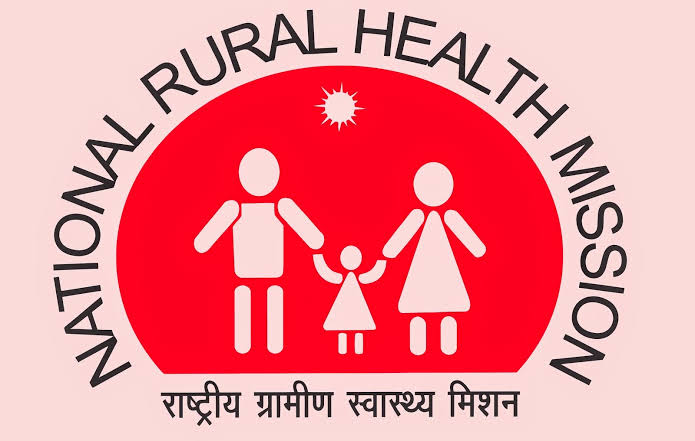The National Rural Health Mission (NRHM) was launched by the Prime Minister on 12th April 2005, to provide accessible, affordable and quality health care to the rural population, especially the vulnerable groups. An important topic for UPSC as well as other Government Exams in terms of topics related to Social justice and Welfare scheme. Social Justice is a part of General Studies paper 2 of the UPSC Syllabus. 
A special focus has been given to the Empowered Action Group (EAG) States. The States of North-East, J&K and Himachal Pradesh are also considered. This is to ensure that the necessary attention is delivered wherever needed.
National Rural Health Mission:- Download PDF Here
Aspirants can find information on the structure and other important details related to the IAS Exam, in the linked article.
| Aspirants should begin their preparation by solving UPSC Previous Year Question Papers now!!
To complement your preparation for the upcoming exam, check the following links:
|
Objectives and Components of NRHM
The essence of NRHM is a health delivery system that functions independently, is community-owned and decentralized. The mission also aims to deliver constant support to those who contribute to the social determinants of health. Basic objectives to implement NRHM are:
- Reduction in infant mortality rate and maternal mortality rate
- Ensuring population stabilization
- Prevention and control of communicable and non-communicable diseases
- Upgrading AYUSH(Ayurvedic Yoga Unani Siddh and Homoeopath) for promotion of a healthy lifestyle.
And the major initiatives under NRHM are as follows.
- ASHA:
- The Accredited Social Health Activists aka ASHAs are the volunteers that engage in this mission that will establish a link between the health system and the targeted community. More than 8.84 lakh of these community health volunteers have contributed to this mission.
- ASHA is the first port of call for any health-related demands of deprived sections of the population, especially women and children, who find it difficult to access health services in rural areas.
- This programme is expanding across States and has particularly been successful in bringing people back to the Public Health System. It has also increased the utilization of outpatient services, diagnostic facilities, institutional deliveries and inpatient care.
- Rogi Kalyan Samiti (Patient Welfare Committee)/Hospital Management Society:
- It is a registered society that acts as a group of trustees to manage the affairs of the hospitals.
- A united fund looks after the funding and other financial assistance for these communities that are involved in patient welfare activities.
- The United Grants to Sub-Centres
- It has given new confidence to auxiliary nurse midwives (ANMs) in the field who are better equipped now with Blood Pressure measuring equipment, Stethoscope, weighing machine, etc.
- They can actually undertake proper antenatal care and other health care services.
- Another important tool of community empowerment is the Village Health Sanitation and Nutrition Committee (VHSNC) which works at the grassroots levels.
- Health Care Service Delivery
- Health Care Service Delivery requires intensive human resource inputs. As can be seen from various surveys, there is an enormous shortage of human resources in the public health care sector in the country.
- NRHM has attempted to fill the gaps in human resources by providing nearly 1.7 lakh people for health services to States including 8,871 Doctors, 2025 Specialists, 76,643 ANMs, 41,609 Staff Nurses, etc. on contractual basis.
- Many unserved areas have been covered through Mobile Medical Units (MMU). So far 2024 MMU are operational in 459 districts across the country.
- The government also provides free ambulance services in every nook and corner of the country connected with a toll-free number and available within 30 minutes of the call. Over 12,000 basic and emergency patient transport vehicles have been provided under NRHM.
- Janani Shishu Suraksha Karyakram
- In order to promote universal healthcare, the government started the Janani Shishu Suraksha Karyakram (JSSK) initiative which provides free to & fro transport, free drugs, free diagnostics, free blood, free diet to pregnant women who come for delivery in public health institutions and sick new-borns.
Candidates can go through the following links to prepare comprehensively for the upcoming Civil Services exams –
Criticism of NRHM
- The NRHM is criticized for adopting a system of Indian Public Health Standards which was seen as having severe limitations.
- While it defined the minimum manpower requirement and the equipment and infrastructure needed to attain a set of well-defined health outcomes the attempts to achieve these were not comprehensive in scope and were biased largely towards reproductive and child health.
- The IPHS was adopted for CHCs, PHCs and district hospitals as well. However, the emphasis was still on purchasing equipment and attaining standards of infrastructure development rather than raising the level of overall service provision.
UPSC Questions related to NRHM
How many states have initiated Janani Suraksha Yojana?
- The scheme focuses on the poor pregnant women with a special dispensation for states that have low institutional delivery rates, namely,
- Uttar Pradesh, Uttarakhand, Bihar, Jharkhand, Madhya Pradesh, Chhattisgarh, Assam, Rajasthan, Orissa, and Jammu and Kashmir.
- While these states have been named Low Performing States (LPS), the remaining states have been named High Performing States (HPS).
The NRHM works under which ministry of the government?
- Ministry of Health and Family Welfare oversees the functionality of the National Health Mission which includes the National Rural Health Mission (NRHM) and the National Urban Health Mission (NUHM).
National Rural Health Mission:- Download PDF Here
Candidates can find the general pattern of the UPSC Civil Service Exam by visiting the IAS Syllabus page.
Aspirants can find complete information about upcoming Government Exams through the linked article. UPSC exam-related preparation materials will be found through the links given below.

Comments